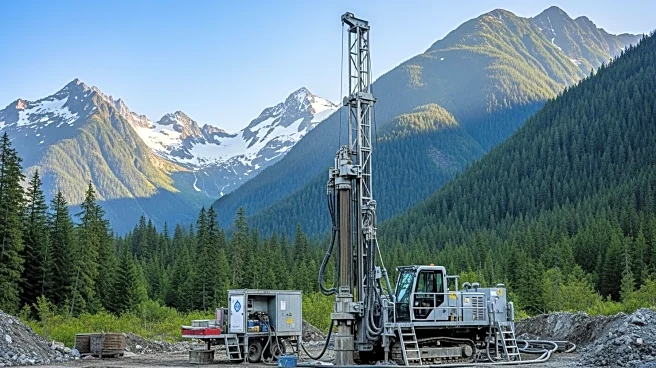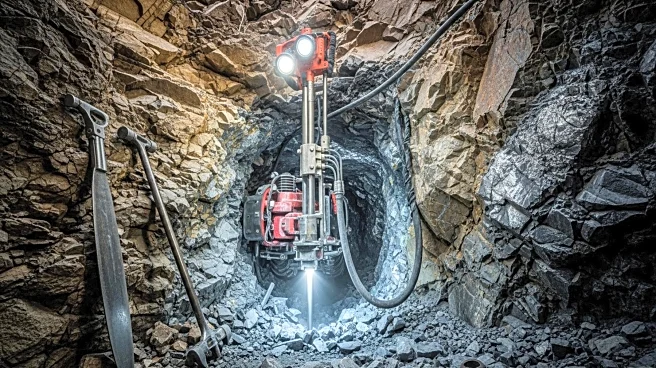What's Happening?
Seabridge Gold Inc. has been recognized for controlling the world's largest undeveloped gold project, the KSM project, located in British Columbia's Golden Triangle. The project has achieved a critical milestone by obtaining its Substantially Started Designation, ensuring permits remain valid for the life of the project. The KSM project is expected to produce approximately one million ounces of gold and 178 million pounds of copper annually over a 33-year mine life. Seabridge Gold Inc. has also maintained a strong financial position with cash and cash equivalents of CA$121.4 million, supported by recent equity financing. The company is focusing on securing a major joint venture partner for the KSM project, with potential partner selection targeted by the end of 2025.
Why It's Important?
The development of the KSM project is significant for the mining industry, as it represents one of the largest gold and copper resources globally. The project's Substantially Started Designation provides a competitive advantage by ensuring long-term permit validity, a rare achievement for a project of this scale. This milestone could attract major joint venture partners, enhancing Seabridge's market position and financial stability. The project's low-carbon energy footprint, powered by BC Hydro's hydroelectric grid, aligns with increasing environmental, social, and governance standards, potentially appealing to environmentally conscious investors.
What's Next?
Seabridge Gold Inc. plans to continue its joint venture process, aiming to select a partner by year-end 2025. The company is also preparing for the completion of a Bankable Feasibility Study in 2026 and the commissioning of the Treaty Creek substation in the fourth quarter of 2026. Exploration results from the 3 Aces and Snowstorm projects are expected to provide additional growth opportunities. These developments could further enhance Seabridge's valuation and market position.
Beyond the Headlines
The KSM project's environmental impact is minimized by its reliance on hydroelectric power, setting a precedent for sustainable mining practices. This approach may influence future mining projects to adopt similar strategies, contributing to broader industry shifts towards sustainability. Additionally, the project's scale and resource potential could drive regional economic growth, creating jobs and infrastructure development in British Columbia.










